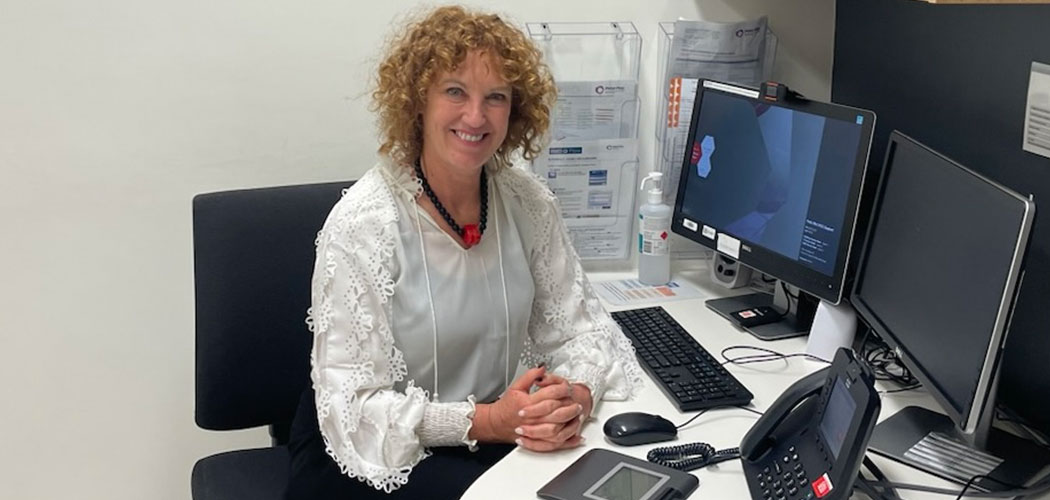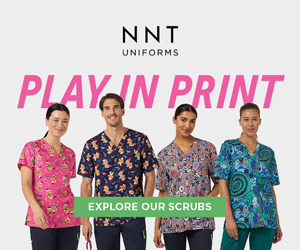Nurse Susan Jury helped establish VictoriaŌĆÖs statewide voluntary assisted dying care navigator service in the lead up to landmark legislation coming into effect in June 2019.
The statewide navigator service, which includes a multidisciplinary team of nursing and allied health expert clinicians delivering support to individuals and families, sees around 1,000 people a year.
ŌĆ£ItŌĆÖs enormously satisfying to see the great comfort people get in just having the option of VAD at end of life,ŌĆØ says Susan.
ŌĆ£This comfort is palpable. People often tell us they are able to live better and engage with palliative care more willingly once they have their ŌĆśbackup planŌĆÖ in the cupboard ŌĆō about 30% of people with the substance actually never use it.ŌĆØ
Susan spoke to the ANMJ about her role leading the statewide team and some of the challenges facing VAD in Australia.
Who can access VAD in Australia?
Voluntary assisted dying legislation exists in all Australian states, coming into effect in the ACT in November 2025 and still under debate in the Northern Territory. There are variances across jurisdictions, but Australia-wide the person must be an adult and in the late stages of a terminal illness, usually with a prognosis of less than six or 12 months. Click here for more information.
What does the model of care entail?
The VAD navigator service team provides information, education and support to anyone – the person themselves, family, friends, the usual care team and VAD assessing doctors. We often help health services review their VAD policies.
We are led by the person as to what they need from us. An underlying goal is always to upskill the existing team to provide VAD support within usual care wherever possible.
What role do nurses play in supporting people to access VAD?
Asking about VAD can be one of the most difficult questions a person or their loved one has to ask, potentially carrying stigma impacting therapeutic relationships.
Nurses should pre-emptively consider their own position on VAD and how to respond in a way that respects their own position as well as the personŌĆÖs right to make their own choices.
Nurses should provide open, respectful support and care to the person and family, recognising the sometimes-complex impact VAD can have on everyone involved. Not everyone is open about their VAD request, even with immediate family. This requires extra considerations around confidentiality.
Finally, nurses can determine, within their organisationŌĆÖs policy, what role they feel comfortable with ŌĆō which can range from general care for a person being assessed for VAD, to caring for them on the day they plan to use it, to being willing to mix the substance and be in the room at the time a person uses it.
What are the biggest challenges care navigators face?
Being a VAD navigator is an incredibly humbling and rewarding role. The biggest challenge can be the distress when a person seeking VAD is unable to access it.
There are many reasons for this, including; they start the assessment process too late in their illness and run out of time; are admitted to a health service that doesnŌĆÖt fully support VAD; they lose capacity; they do not meet residency requirements; there are no available VAD trained doctors or they are unable to travel to assessments.
What does a typical day look like?
Our team takes calls from anyone, making our days unpredictable and busy. We adapt to rapid deteriorations in a patientŌĆÖs health and solve problems daily, from finding two suitable VAD doctors to ensuring there are supports in place for grieving or bereaved families, including children. We often guide new VAD doctors through the bureaucratic assessment process.
Home visits allow rich conversations with the person and family about VAD requests, potential family conflicts, end of life fears, and planning for VAD assessment. Like many nursing roles, we often form intense therapeutic relationships at an incredibly difficult time of peopleŌĆÖs lives.
What have you learned most about VAD since moving into this field?
Every day in this role is a learning experience. Some people say that VAD removes precious time at end of life for people to say their goodbyes. IŌĆÖve witnessed the opposite. Although the lead up to a known time of death can trigger anxiety, it also puts a definitive timeframe on being sure to say and do what is important at end of life. This pre-death anxiety is almost always followed by great relief that the person died the way they wanted and in peace.
VAD truly shifts care from clinician to patient-centred, which I think is one reason why some clinicians struggle with it ŌĆō especially when the patientŌĆÖs choice doesnŌĆÖt align with their own values.
How do care navigators manage the emotional impact of the job?
Laughter, care for each other and support, as well as monthly clinical supervision.
We discuss tricky, sad as well as satisfying scenarios with each other often.
Our exceptional regional navigators ŌĆō currently all nurses ŌĆō can be more isolated though, as they work solo across their region. We try to work closer with them through a partnership model between metro and regional navigators and a biannual in-person workshop including a dinner catch-up.
What are common misconceptions about VAD?
Nurses and others are often fearful of discussing VAD due to laws in Victoria prohibiting healthcare professionals from raising VAD.
However, once a person raises VAD, including with a colleague, it is ok to discuss it ŌĆō within the parameters of the clinicianŌĆÖs skills, comfort and knowledge and organisational policy.
Despite progress, we still meet people who say ŌĆśI have raised VAD so many times and nothing has been doneŌĆÖ. We encourage nurses to have a plan for responding to VAD enquiries ŌĆō clarify the request, escalate or refer as appropriate, and provide our contact details for further support.
What remains the biggest barrier to more people accessing VAD in Australia?
Nationwide, people may not know VAD is an option. Sometimes this means they find out very late in their illness when they are no longer able to travel to appointments or are admitted to a non-supportive health service or unit.
Another barrier ŌĆō with Australia-wide impact ŌĆō is a Federal law which prohibits the use of carriage services (email, phone, fax and video) to ŌĆ£incite suicideŌĆØ. This law was introduced to stop cyber-bullying but also means personalised discussions about VAD cannot occur via telehealth. This significantly impacts regional and rural Victorians and those who cannot travel (most people near end of life). This is an unfortunate unintended consequence of the federal law and there is ongoing advocacy ŌĆō including a joint statement signed by by ANMF ŌĆō to address this.┬Ā┬Ā
What does the future hold for VAD in Australia?
I would love to see a more unified approach across Australia ŌĆō for example cross border agreements for people wishing to utilise VAD in another state and closer alignment of the various laws on more bureaucratic components. The VAD peak body VADANZ is advocating towards these and other goals.
In Victoria and South Australia, the law does not specify any role for nurses. Legislation elsewhere in Australia does, and I think this supports improved access to VAD.
Finally, I think there is a valuable place for VAD in health curricula. I have seen how VAD has opened so many of our eyes to what dying and end of life really means to people ŌĆō many doctors have said working in VAD has made them a better doctor and I think the same goes for all clinicians.
The second annual Trans-Tasman Voluntary Assisted Dying Conference will be held in Brisbane from 28-29 October.









One Response
Kudos to you for addressing this very complex issue. I hope one day we will have medical rules and laws that is recognised Australia wide, no boundaries involved.
And yes, in an ideal world this issue about VAD should be included in the nursing/medical curriculum, just like palliative care is. Not a lot of medicos have no idea how to face the complexity of what palliative care is about.
The world has a lot to learn.